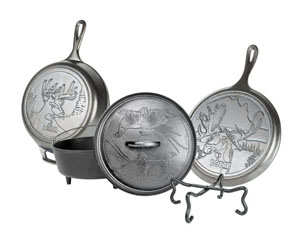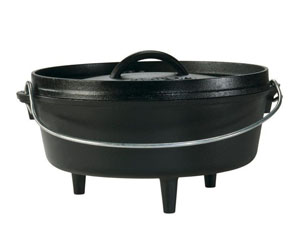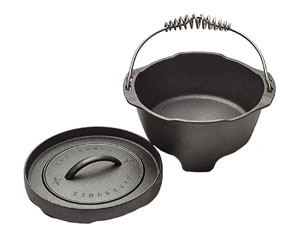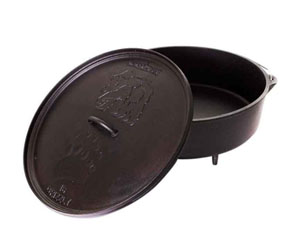Types of Dutch Ovens:
Which is Best?
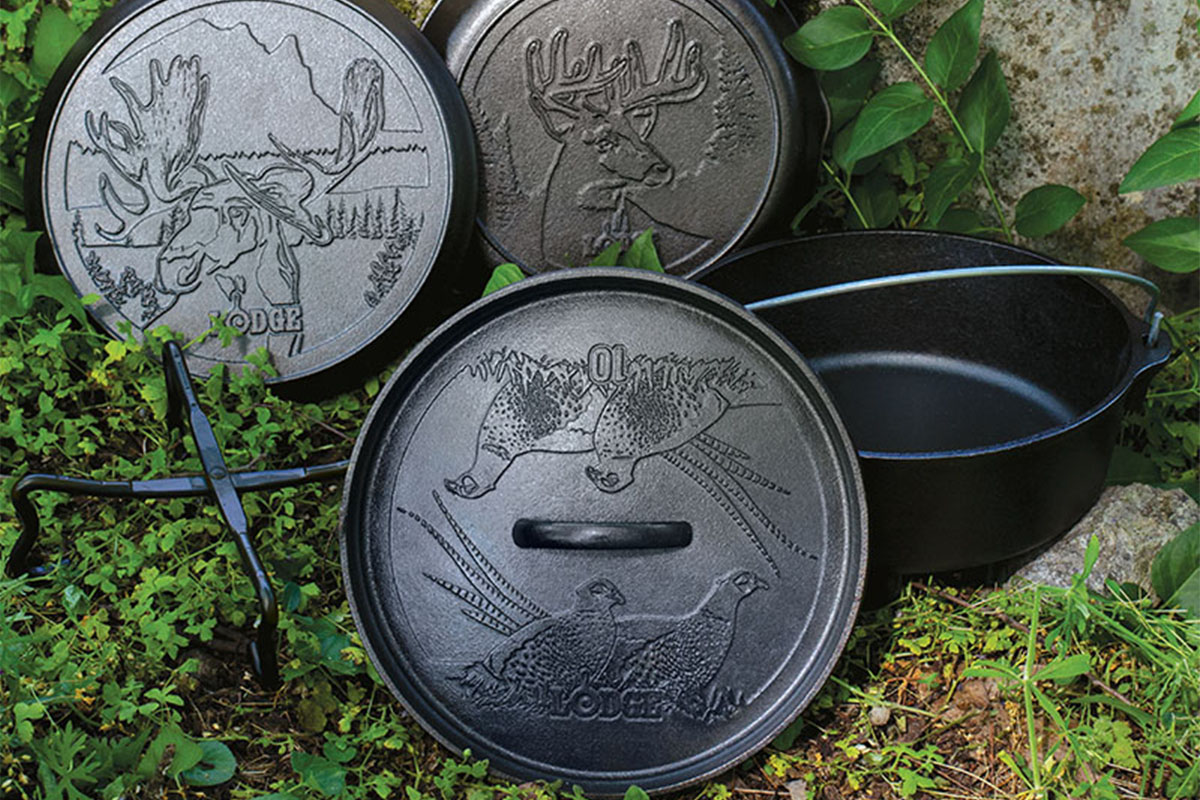
If you want maximum cooking capability with minimum investment, buying a Dutch oven is a great way to make that happen. Dutch ovens can bake, roast, broil, braise, and sauté, all in the same pot. These heavy-duty tools are a revelation for most first-time buyers.
When choosing a Dutch oven, it’s important to consider the type, size, brand, and material to find the Dutch oven that best serves your needs.
Instead of stuffing a kitchen with specialized cookware, why not invest in one piece that can cook almost anything? Dutch ovens also keep food warm thanks to their covers, and are often aesthetically appealing enough to serve in, too.
What is a Dutch Oven?
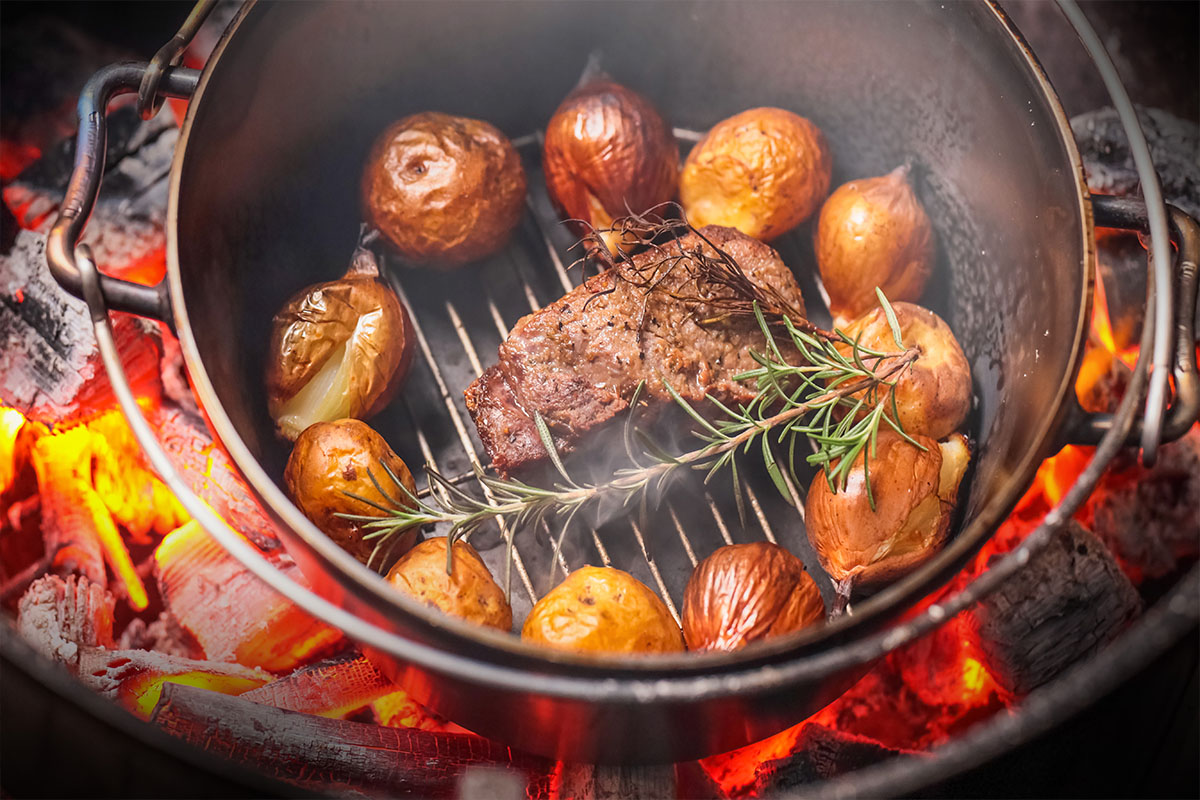
Dutch ovens are large, cast-iron pots with heavy bottoms, tall walls, and handled lids.
Dutch ovens are often available in bright colors, but the color is just an enamel coating over their cast-iron construction. Brightly designed Dutch ovens can be used as decorative serving vessels in addition to cooking pots, making them all the more versatile.
Dutch ovens can go from stovetop to oven, and retain heat remarkably well, thanks to the cast-iron build. They are good for outdoor cooking because they can be placed directly over a campfire. In fact, Dutch ovens can be used on virtually any type of cooking surface, including finicky induction burners.
What Can You Cook in a Dutch Oven?
You can cook just about anything in a Dutch oven. A Dutch oven can be used for almost any culinary technique you’re likely to encounter. As a general rule of thumb, a Dutch oven can be used for anything that a pot or a cast-iron pan can do.
Dutch ovens perform very well when used with extremely high heat, thanks to their cast-iron construction. Here are a few popular styles of cooking where Dutch ovens excel:
- Baking
- Deep Frying
- Stews and Soups
- Roasting
- Braising
- Poaching
Now, let’s dive into the different type and size considerations for Dutch ovens, which help determine their best uses.
Types of Dutch Ovens
The first decision you’ll need to make when purchasing a Dutch oven is what type of material is the best fit for your needs. Different materials require different care and lend themselves better to various cooking styles.
You’ll likely be choosing a Dutch oven from the following options:
Let’s go through each type and lay out the specific features.
1. Seasoned Cast Iron - Best for flavorful camp cooking
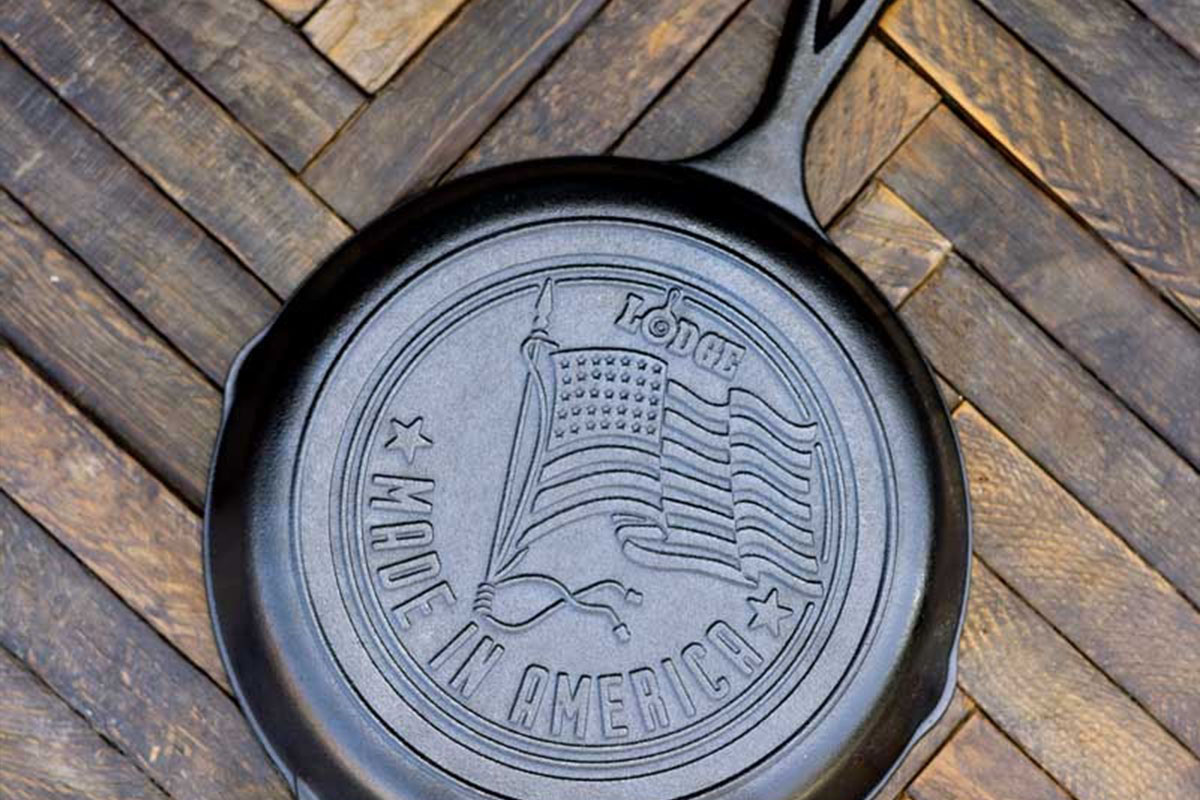
Seasoned cast iron is a familiar staple of many indoor and camp kitchens, especially in cast iron pans. This familiar cast iron setup can be used for the Dutch oven, and will retain heat for long periods of time, making them great for longer recipes.
Seasoned cast iron takes in the flavor of everything you cook in it, meaning the flavor from the Dutch oven will get better the more you use it. This also means you don't need to use soap to wash seasoned cast iron, but instead use a cleaning pad before adding a few drops of oil to maintain the seasoning.
Highlights of seasoned cast iron:
- Cast iron cookware adds more flavor the more you use it
- Longer heat retention (great for slow-cooker and deep fry recipes)
- Don't need to wash with soap
- Long-lasting if well maintained
2. Enameled Cast Iron - Best for indoor stovetop cooking
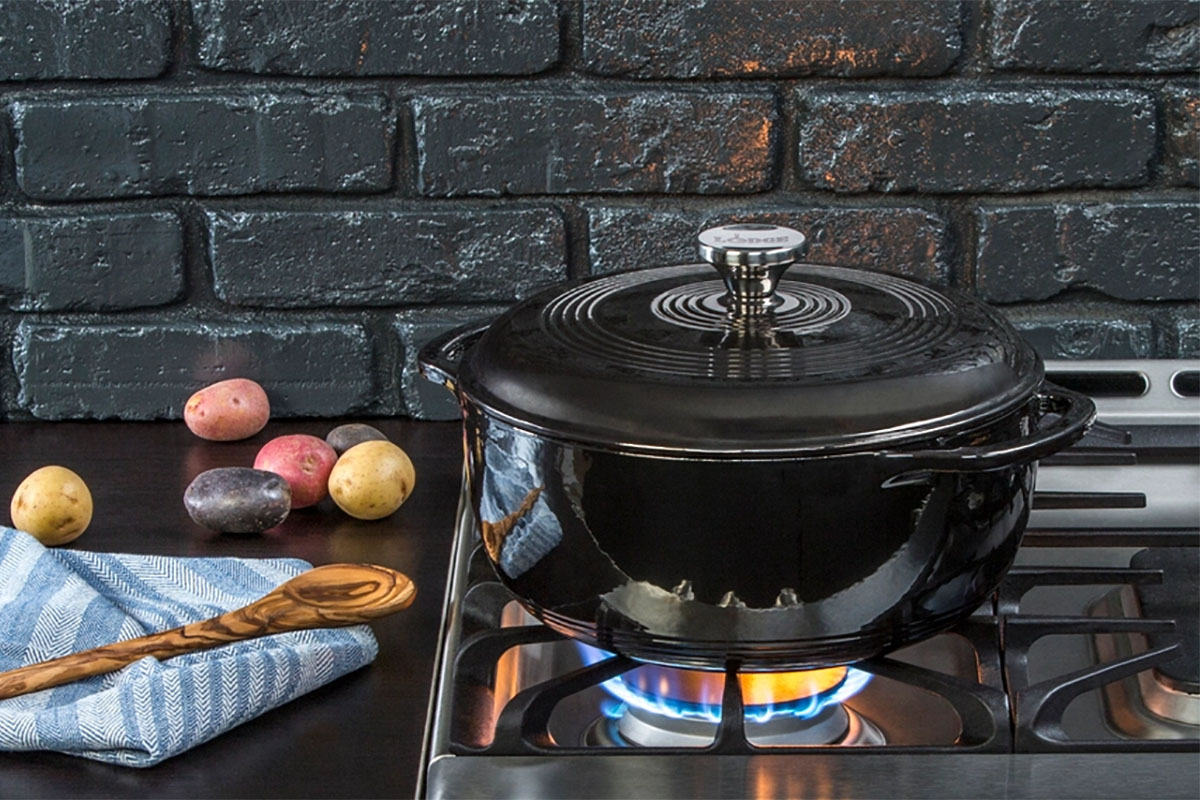
Have you seen those beautiful, colorful Dutch ovens? These are enameled cast iron, which in addition to lending brilliant colors to your cookware do not have to be seasoned prior to use like traditional cast iron.
Enameled cast iron makes cleaning easier, and helps ensure even cooking of food. Enameled cast iron are a pricier option, but they will last a very long time.
Highlights of enameled cast iron:
- Aesthetically pleasing
- Easy to clean
- Even heat distribution
- Long lasting
Seasoned and enamel cast iron are two of the most popular types of Dutch oven, so let's look at a side-by-side comparison of these two options.
Seasoned vs Enameled Cast Iron
| Seasoned Cast Iron | Enameled Cast Iron |
|---|
Seasoned cast iron and enamel cast iron are two of the most popular types of Dutch oven, so let’s look at a side-by-side comparison of these two Dutch oven options.
3. Stainless Steel - Best for cost value cooking
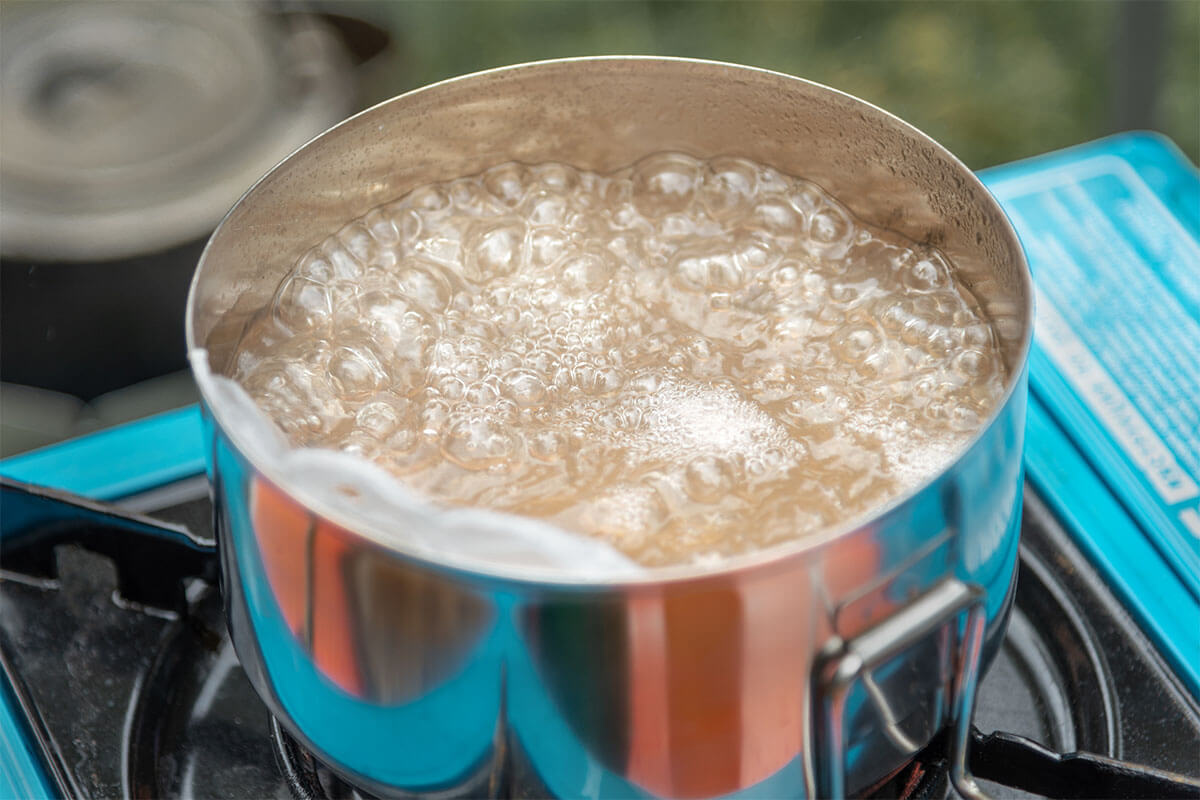
If cast iron sounds like too much cleaning and maintenance, stainless steel might be a better fit. Stainless steel Dutch ovens can go right in the dishwasher. However, stainless steel Dutch ovens have one big drawback – they do not retain heat as well as cast iron. This is an important factor in many Dutch oven recipes.
In addition, many stainless steel Dutch ovens do not have a heavy enough lid to trap in heat and flavor. You'll need to consider what type of recipes you will be making in your Dutch oven before choosing a stainless steel option.
Highlights of stainless steel Dutch ovens:
- Very easy to clean and maintain (usually dishwasher safe)
- Less heat retention
- Looser fitting lid
- Not appropriate for all Dutch oven recipes
4. Aluminum - Best lightweight option for quick cooking
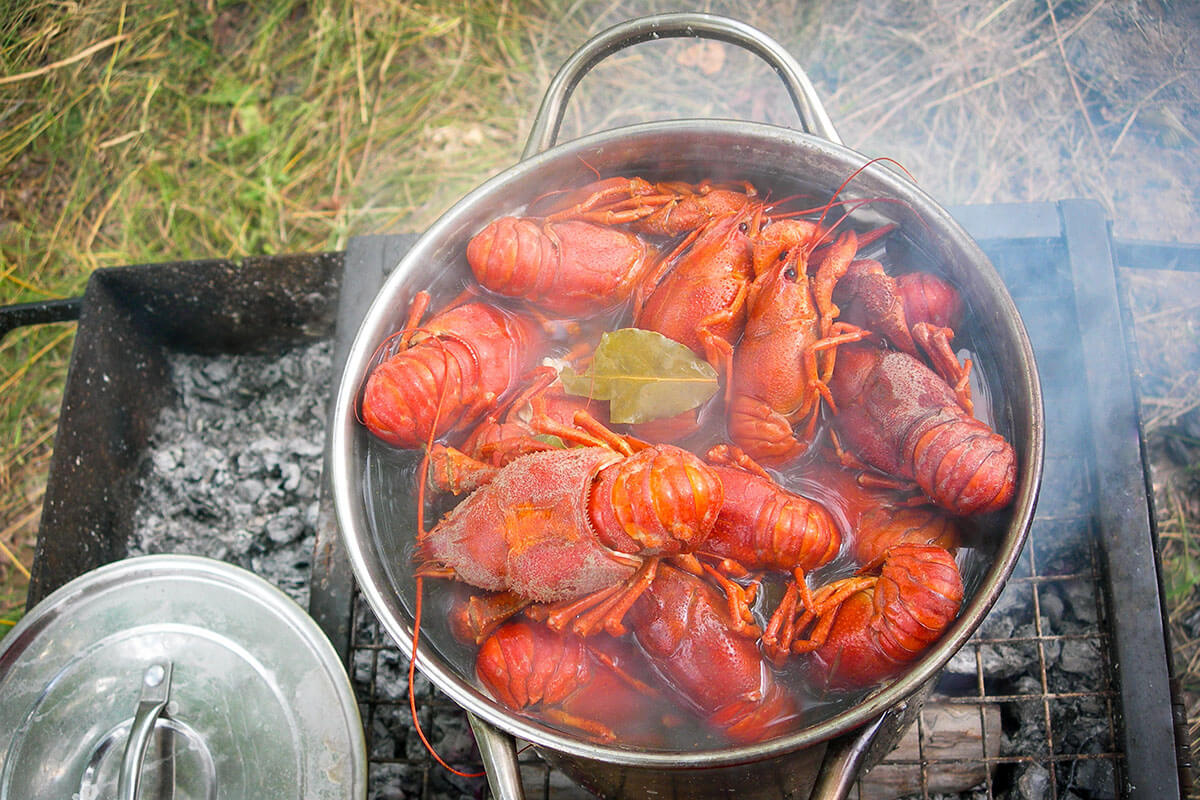
Aluminum provides a much lighter alternative to cast iron. This lightness also means it heats very quickly, though its heat distribution isn't as even as cast iron.
Highlights of aluminum Dutch ovens:
- Much lighter than cast iron (usually 1/3 as heavy)
- Heat distribution is more uneven
- Can be washed with soap and water
5. Ceramic - Best for quick cleanup
Ceramic Dutch ovens provide another lightweight alternative. These are particularly nice for stews and bread baking. They are easy to clean, but are also more fragile than other Dutch ovens. They can easily crack when dropped or a when they experience a sudden temperature change.
Highlights of ceramic dutch ovens:
- Easy to clean
- Lightweight
- More fragile
Popular Dutch Ovens
The following are a few of the most popular Dutch ovens on the market today.
Choosing a Dutch Oven Size
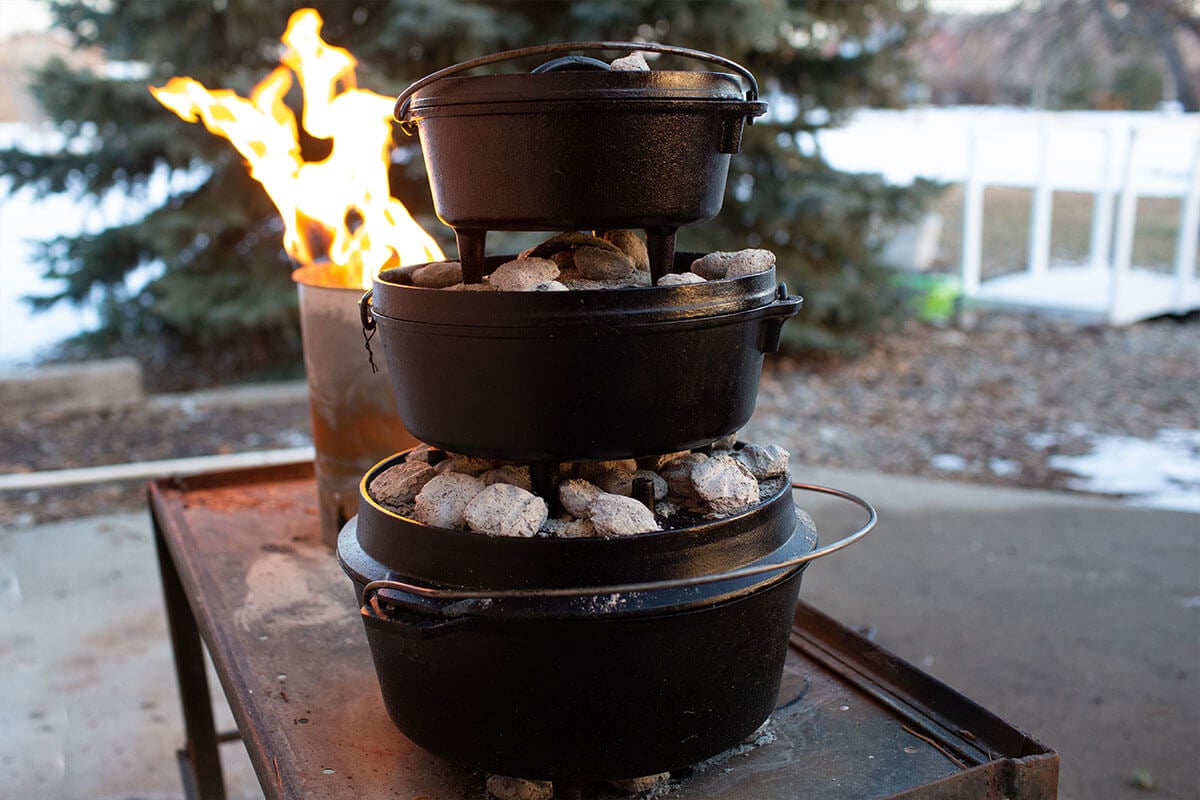
Now that we’ve gone through the different types of Dutch oven material, it’s time to choose a size. A larger Dutch oven will help you cook bigger meals, but you don’t want a larger Dutch oven than you actually need.
Dutch ovens are measured in quarts, and it’s a good idea to consider how big the meals you'll be preparing are going to be before determining the size of Dutch oven you'll purchase. Will you be cooking for the holidays or other group gatherings? Or are you primarily cooking for yourself on solo camping trips?
The following chart will help you determine which size of Dutch oven is best for you. As a rule of thumb, one quart corresponds to about one serving.
Dutch Oven Sizing & Servings Chart
| Quarts | Servings | Types/Size of Dishes | |
|---|---|---|---|
| ½-2 | 1-2 | Individual side dishes or desserts | |
| 2-4 | 2-3 | Larger side dishes, sauces, gravies | |
| 4-5 | 3-5 | Main course for family of 2-4 | |
| 5-6 | 5-7 | Ideal for going between smaller and larger gatherings | |
| 6-10 | 8-14 | Chili, soups, whole chicken/goose | |
| 13-15 | 15-20 | Large gatherings, whole turkey | |
| *A 5-6 quart Dutch oven is often considered the sweet spot for folks who are not caterers and will want to use their Dutch oven for both main courses and side dishes. | |||
If you’re preparing whole cuts of meat, you’ll also want to check the diameter and depth of your Dutch oven to make sure it has the space available for the cut or the bird. While sizes can vary, below is a basic chart showing common sizing options.
Dutch Oven Size & Capacity Chart
| Diameter | Depth | Capacity |
|---|---|---|
| 8" | 3.5" | 2 quarts |
| 10" | 4" | 4 quarts |
| 12" | 4.5" | 6 quarts |
| 14" | 5.5" | 8 quarts |
| 16" | 5" | 10 quarts |
| 18" | 5.5" | 12 quarts |
| 20" | 6" | 14 quarts |
You’ll also want different shapes depending on what you’ll be cooking. If you’ll be cooking large cuts of meat like a leg of lamb, an oval Dutch oven may be a better fit – but this means it might be tougher to manage on the stove.
Design Choices for Your Dutch Oven
Once you’ve determined the size and material of your Dutch oven, there are a few more decisions left to make. Some design choices are purely aesthetic, meaning you can go with your personal preference without compromising cooking performance. Other design choice will impact the way your food will be cooked.
The design elements we’ll cover in this section are:
- Interior
- Lid
- Color
1. Dutch Oven Interiors: Dark vs. Light
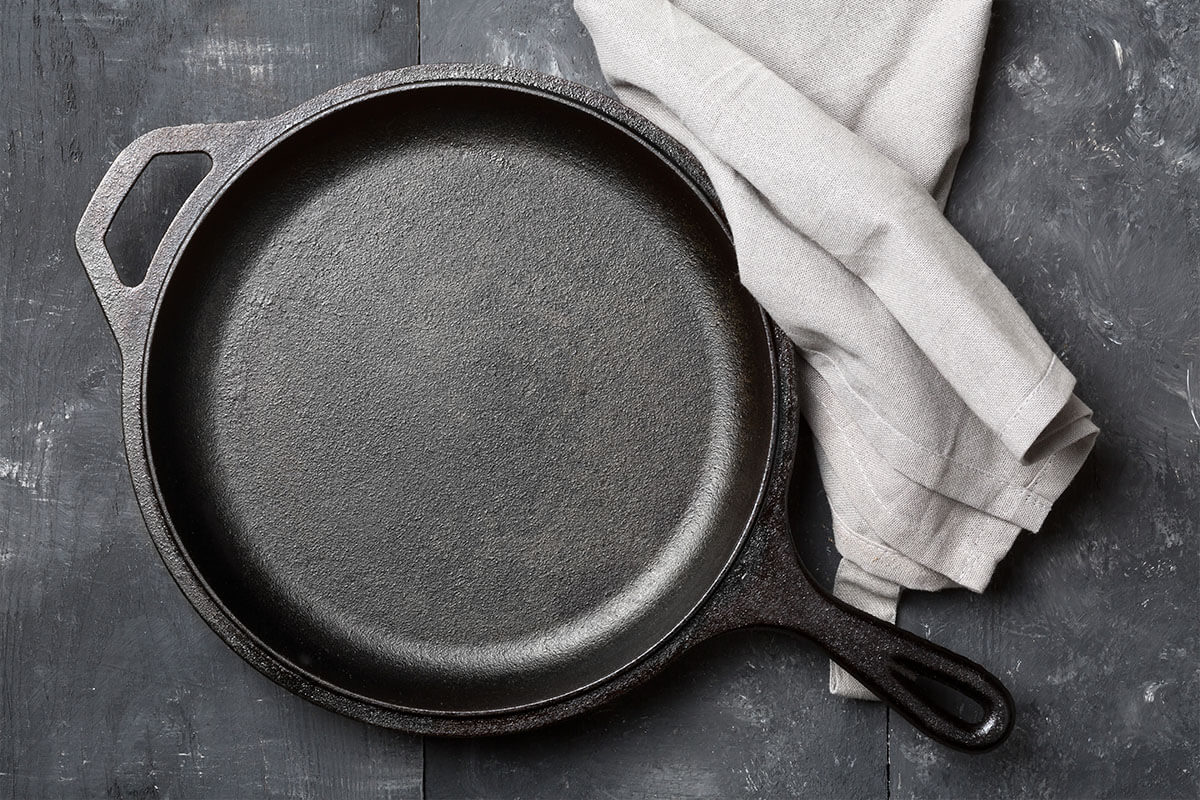
In general, Dutch ovens come with light or dark interiors, each with pros and cons. A light interior will allow you to see what you’re cooking more easily, monitoring more precisely how your food changes color.
A dark interior won’t make your food as visible, but it will also hide scratches and scruffs. Lighter interiors are more likely to show lines over time, especially if you use metal utensils. If you prefer the masking of a dark interior, you may want to use an oven light or flashlight to see what you’re cooking better.
Light vs Dark Interior
| Light Interior | Dark Interior |
|---|---|
|
|
2. Dutch Oven Lids
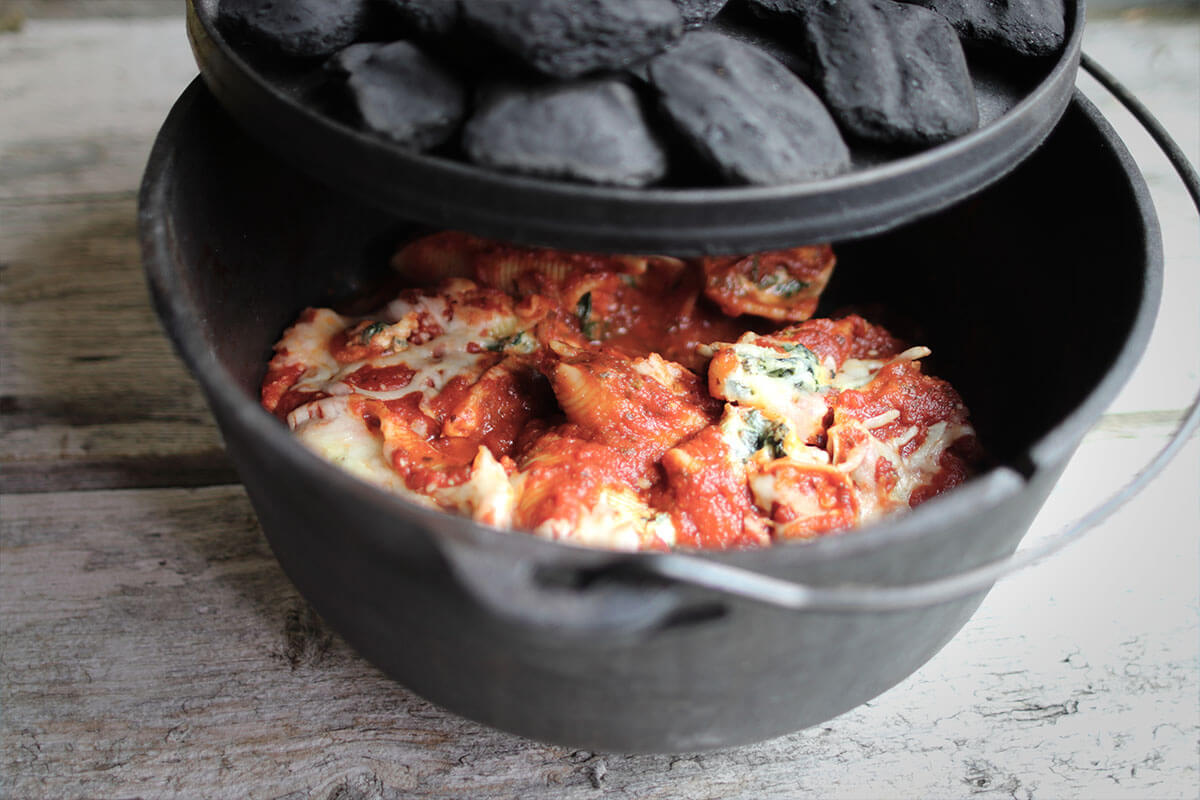
The design of the Dutch oven’s lid can impact the taste of the food. A spiked lid helps condensation return to the food in an even pattern, keeping your dish moist.
Raised rings also help moisten your dish with condensation. Without these features, condensation may just drip down the walls, impacting only the edges of your food.
Regardless of lid design, it’s important to have a heavy lid for your Dutch oven. This is what traps steam and moisture inside and creates tender meats.
3. Dutch Oven Colors
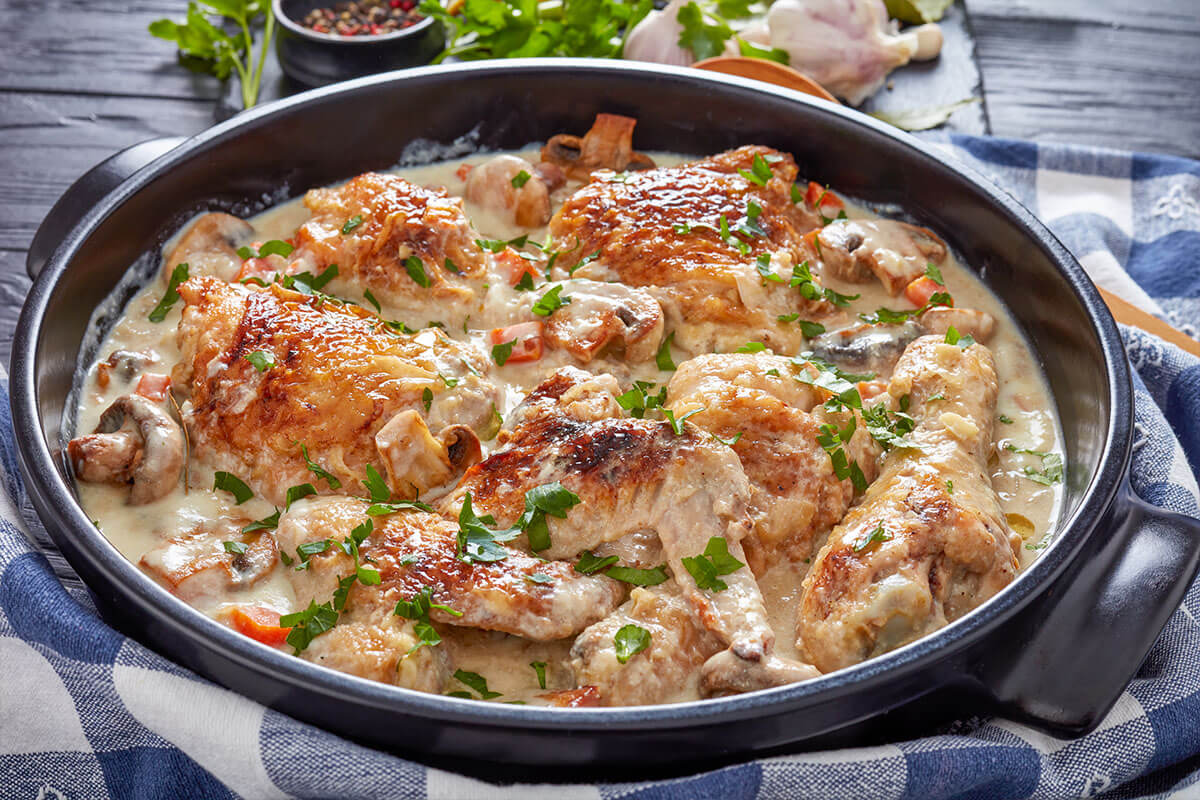
A colored Dutch oven brings beautiful new decor to your kitchen! The color you choose for your Dutch oven is really up to personal preference.
Popular brands offer a large variety of Dutch oven colors to choose from. Le Creusetoffers a wide variety of brightly colored enameled cast iron cookware, while Staub offers deeper tones and interchangeable knobs that can be swapped for cute designs. You can even get a Dutch oven in the shape of a vegetable!
Dutch Ovens Outdoors
Dutch ovens are a popular cooking tool for camping. Seasoned cast iron does well over a fire and with charcoal, and a variety of delicious one-pot recipes can be brought to the campsite with the addition of a cast iron Dutch oven.
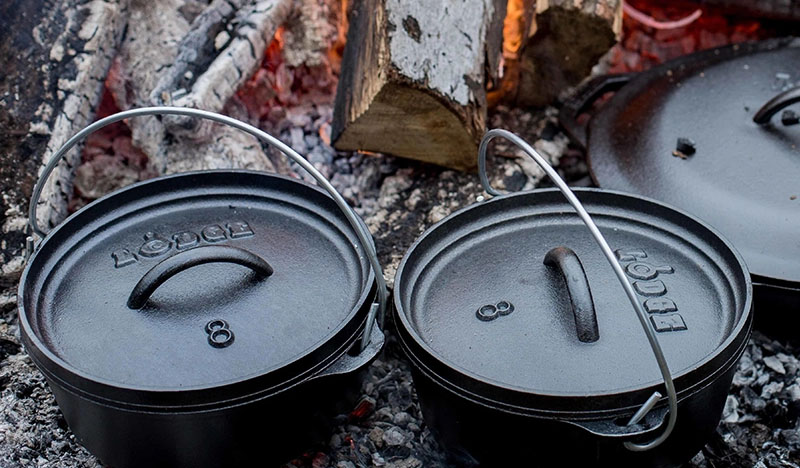
When cooking with a Dutch oven outdoors, using charcoal is often a great way to reach a specific temperature range for cooking a variety of foods and recipes. You’ll want to arrange the charcoal differently based on the type of cooking you’re doing and the temperature you’re aiming for.
Percent of Coals Above/Below the Dutch Oven
| Frying or Boiling |
| Roasting |
| Simmering |
| Baking |
A camping dutch oven will have a flat lid with a raised rim to allow charcoal to be placed on top easily.
While it’s tough to get an exact temperature out in the wild, especially because of differences in weather conditions, we do have a basic chart that can help you determine how much charcoal you’ll need for a given recipe.
Dutch Oven Briquette Temperature Chart
| 325° | 350° | 375° | 400° | 425° | 450° | ||||||||
|---|---|---|---|---|---|---|---|---|---|---|---|---|---|
| DUTCH OVEN SIZE | TOP | BOTTOM | TOP | BOTTOM | TOP | BOTTOM | TOP | BOTTOM | TOP | BOTTOM | TOP | BOTTOM | |
| 8" | 10 | 5 | 11 | 5 | 11 | 6 | 12 | 6 | 13 | 6 | 14 | 6 | |
| 10" | 13 | 6 | 14 | 7 | 16 | 7 | 17 | 8 | 18 | 9 | 19 | 10 | |
| 12" | 16 | 7 | 17 | 8 | 18 | 9 | 19 | 10 | 21 | 10 | 22 | 11 | |
| 14" | 20 | 10 | 21 | 11 | 22 | 12 | 24 | 12 | 25 | 13 | 26 | 14 | |
| 16" | 25 | 12 | 26 | 13 | 27 | 14 | 28 | 15 | 29 | 16 | 26 | 14 | |
| *Peices of coal to place on the top/bottom of your dutch oven, based on size and temperature. | |||||||||||||
Frequently Asked Questions
- What’s the difference between a Dutch oven and a stockpot?
- Stockpots are only made for soups, stews, and other liquid-based dishes; because of this, they have higher walls and do not have the ability to sear or fit inside standard ovens as Dutch ovens do.
- Is it safe to use a Dutch oven with chipped enamel?
- Because enamel is just a coating, chipped enamel is only an aesthetic issue. A Dutch oven with chipped enamel will still function perfectly fine.
- Are there any safety concerns using a Dutch oven?
- Dutch ovens aren’t inherently dangerous. But, they are very heavy and often full of hot liquid. If you have severe upper body or back problems, make sure to exercise caution when using a Dutch oven.
- How long will a Dutch oven last?
- Many Dutch ovens last a lifetime – and several brands offer lifetime warranties as well. Cast iron and enameled cast iron are extremely durable and can be passed down through generations.
